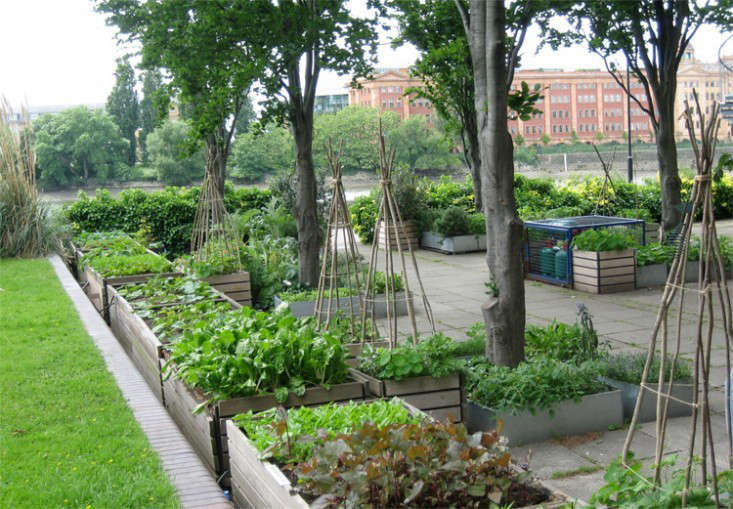Spinach, Spinacia oleracea: “The Workhorse”
I’d like to express my gratitude to the Arab traders who brought spinach to China, where it eventually spread with the help of travelers and farmers right to my own backyard here in North America. Can’t forget to thank Popeye, too–his thrilling biceps spiked American spinach consumption by 33 percent in the 1930s. While Popeye may have been the one pumping iron, spinach is the real workhorse. It’s easy to grow, tastes amazing with just the barest of seasonings, and can be wilted onto or into almost any dish for an extra boost of incredible nutrition.
Above: Photograph courtesy of Anna Wardrop Design.
Spinach packs a laundry list of vitamins, minerals, and antioxidants, in particular delivering hearty doses of iron and calcium per calorie. Weird health tip of the day? The oxalates in this dark leafy green hinder our ability to take in spinach’s iron. But nutritionists have a simple solution. Just serve the wonder-green with a side of orange slices to combat the oxalic effect.
Above: Photograph by David Ferris. For more of this garden, see Take the El to 46th Street and Get Off at the Farm.
Cheat Sheet
- Beautiful dark green foliage can be used as a garden edging
- Prevent spinach from bolting by planting it in the shade of beans or peas
- A side benefit of bolting: yellow-green flowers
Keep It Alive
- When sowing seeds directly into the garden, clear soil of weeds first. This delicate green can suffer from undue competition during its early growth
- Spinach likes full sun to partial shade and consistent water (it will bolt if soil is too dry)
- In hotter climates, plant in containers and move them away from the heat of the sun at midday to prevent bolting
Above: Elegant Deer Fencing protects the salad greens in garden designer Lisa Bynon’s garden in Southampton, Long Island. For more of this garden, see Elegant Deer Fencing, Hamptons Edition.
Spinach might be available year-round in grocery stores, but you’ll get the best results in your home garden if you treat the green as a cool-weather crop. Plant a few successions in early spring, take a break in the summer, and plant again in the fall. In mild climates, you can mulch with straw or lightly cover the plants to keep your crop growing through the winter, or at least to reap another harvest from the same plants in the spring. If you live in a climate that’s too warm for spinach, or want nutritious greens all summer long, try an alternative such as purslane, lamb’s-quarters, amaranth, or orach.
Above: Photograph by Marie Viljoen. See some of Marie’s favorite ways to prepare spinach in Garden-to-Table Recipe: Spicy Spinach from 66 Square Feet.
Read More:
Above: Photograph by Marie Viljoen.
For more dinner ideas (and leafy green love), see our archive of Garden-to-Table Recipes. And read about Tomatoes, Lettuce, and Chives in our Garden Design 101: Edibles guides.
Finally, get more ideas on how to successfully plant, grow, and care for spinach with our Spinach: A Field Guide.
Interested in other edible plants for your garden? Get more ideas on how to plant, grow, and care for various edible plants (including flowers, herbs and vegetables) with our Edible Plants: A Field Guide.













Have a Question or Comment About This Post?
Join the conversation